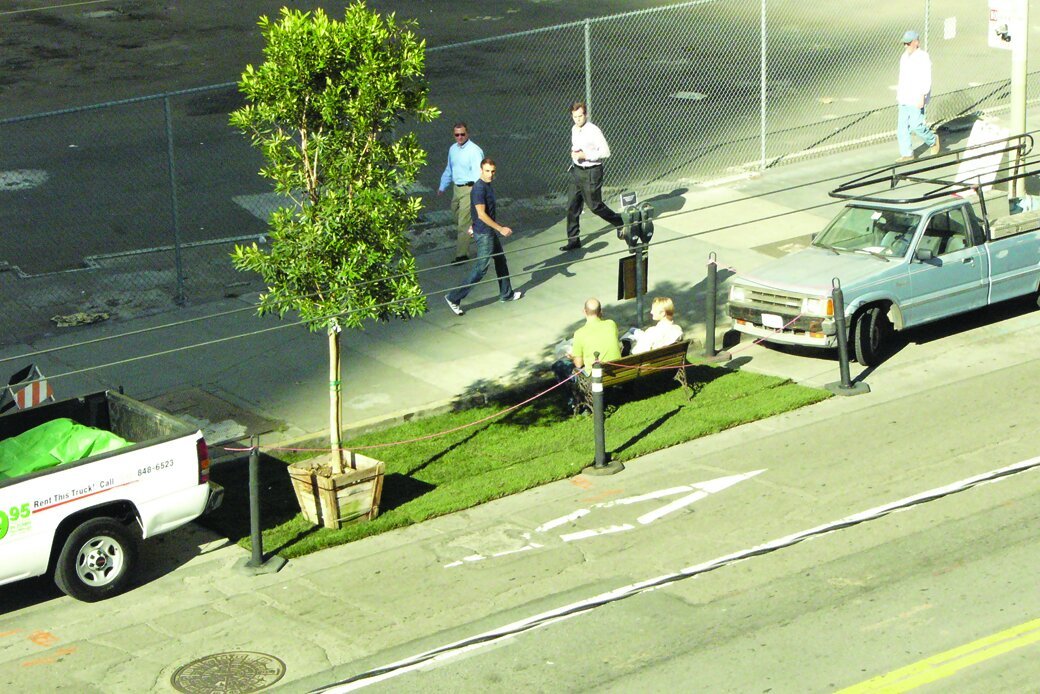We’ve been around since 2005, and a lot has been written, speculated and talked over. The truth is that Park(ing) Day has evolved beyond anything we imagined. Here are some articles that explain some of the history and the influence of this small act of public space defiance.

Park(ing) Day is 17!
Park(ing) Day started as a guerrilla art installation in a single metered parking space in downtown San Francisco in 2005. Inspired by a long legacy of artists, designers, and activists such as Jaime Lerner, Bonnie Ora Sherk, and Gordon Matta-Clarke, my colleagues and I at Rebar temporarily opened a downtown parking spot as a space for people, then shared the idea through a how-to-manual that resulted in the idea becoming a global phenomenon in partnership with thousands of volunteer participants and help from organizations like TPL and ASLA.

Pandemic-era Street Spaces: Parklets and the Future of the Public Realm
On a clear fall day in 2005, a group of friends and collaborators from the art collective Rebar commandeered an 8-foot-wide by 20-foot-long metered parking space in downtown San Francisco. This two-hour guerilla art installation evolved into Park(ing) Day, a global public art and design activism event that has been celebrated every year since. In 2009, Rebar and other design studios were approached by the City of San Francisco to prototype a more permanent version of Park(ing) Day. In response, we created one of the world’s first parklets in San Francisco (we called our version walklet), and through the diligent efforts of Andres Power in the Mayor’s Office and City Planning, San Francisco’s pioneering parklet program was born.
